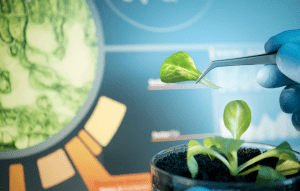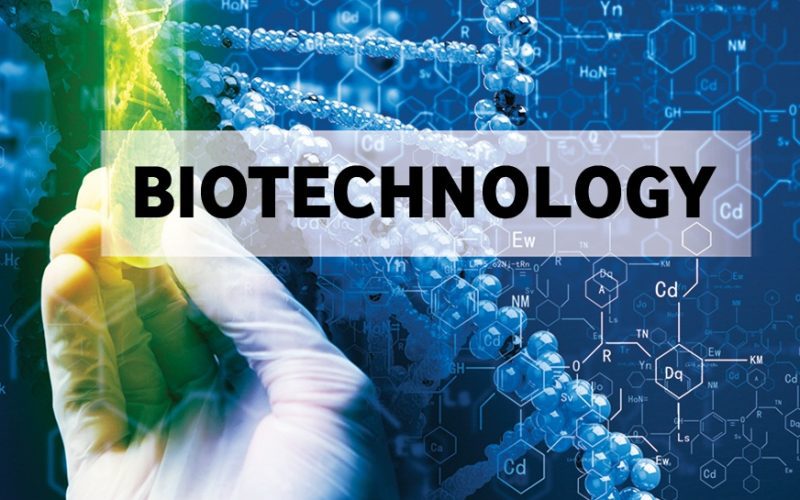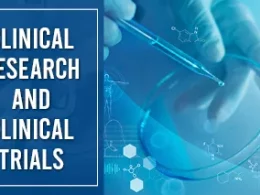Author Introduction: Dr. Emily Johnson, a renowned biotechnologist with over 15 years of experience in the field, has been instrumental in bridging the gap between scientific research and commercial applications. With a PhD in Molecular Biology and a portfolio of successful biotech startups, Dr. Johnson provides an expert perspective on the journey of biotechnology breakthroughs from lab to market.
Biotechnology has revolutionized multiple industries, notably healthcare, agriculture, and environmental science. This article delves into the journey of biotech innovations from the research lab to market, highlighting key breakthroughs that have reshaped our world.
The Research Phase: Innovating in the Lab

Every biotech breakthrough begins with rigorous research. Scientists conduct extensive experiments, often over many years, to discover and refine new technologies. CRISPR-Cas9, a gene-editing tool, is a prime example of a breakthrough that has revolutionized genetic research and treatment options.
Translational Research: Bridging Lab and Market
Translational research plays a crucial role in moving discoveries from the lab to practical applications. This phase involves adapting lab findings to real-world scenarios, ensuring they are viable outside controlled environments. For instance, the development of monoclonal antibodies for treating various diseases is a result of successful translational research.
Clinical Trials: Ensuring Safety and Efficacy
Before any biotech product can reach the market, it must undergo rigorous clinical trials. These trials test the safety and efficacy of new treatments on human subjects. The journey of mRNA vaccines, like those for COVID-19, exemplifies the importance of this phase, demonstrating the potential and challenges of rapid deployment.
Regulatory Approval: Navigating the Legal Landscape
Securing regulatory approval is a critical step in bringing biotech innovations to market. Regulatory bodies like the FDA (Food and Drug Administration) and EMA (European Medicines Agency) ensure that new products meet safety standards. The approval process for CAR-T cell therapies showcases the complexities and triumphs of navigating regulatory landscapes.
Commercialization: From Innovation to Market
Once approved, the commercialization phase begins. This involves scaling production, marketing, and distribution. Strategic partnerships and investments are often crucial at this stage. The commercialization of insulin as a treatment for diabetes is a historic example of a biotech breakthrough reaching widespread use.
Challenges in Bringing Biotech to Market
Despite the potential, numerous challenges can hinder the journey from lab to market. These include high costs, lengthy timelines, regulatory hurdles, and market competition. Understanding and addressing these challenges is essential for successful commercialization.
Future Trends in Biotechnology

The future of biotechnology holds immense promise. Innovations like personalized medicine, bioinformatics, and synthetic biology are poised to drive the next wave of breakthroughs. Staying abreast of these trends is crucial for anyone involved in the biotech industry.
Informative Table: Key Stages of Bringing Biotech Breakthroughs to Market
| Stage | Description | Example Innovations |
| Research | Discovering and refining new technologies | CRISPR-Cas9 |
| Translational Research | Adapting lab discoveries for real-world applications | Monoclonal Antibodies |
| Clinical Trials | Testing safety and efficacy on human subjects | mRNA Vaccines |
| Regulatory Approval | Ensuring products meet safety and efficacy standards | CAR-T Cell Therapies |
| Commercialization | Scaling production, marketing, and distribution | Insulin for Diabetes |
| Addressing Challenges | Overcoming financial, regulatory, and competitive hurdles | Various Biotech Startups |
Comparative Table: Traditional vs. Modern Biotechnology Development
| Feature | Traditional Biotechnology | Modern Biotechnology |
| Research Pace | Slower, Manual Processes | Faster, Automated Techniques |
| Translational Research | Limited by Technological Constraints | Advanced Tools and Methods |
| Clinical Trial Duration | Longer, Sequential Phases | Accelerated, Parallel Phases |
| Regulatory Hurdles | Stringent, Lengthy Approvals | Streamlined, Conditional Approvals |
| Commercialization Speed | Gradual Market Introduction | Rapid Scaling and Deployment |
| Innovation Focus | Broad, General Applications | Targeted, Personalized Treatments |
Conclusion
Biotechnology breakthroughs have the potential to transform industries and improve lives. From the initial research phase to commercialization, each step in the journey is crucial for bringing innovative solutions to market. Despite the challenges, the future of biotechnology is bright, with emerging trends promising even more groundbreaking advancements. Understanding this journey and its complexities can inspire further innovation and successful market transitions.
This article, authored by Dr. Emily Johnson, combines her extensive experience in biotechnology and commercialization to provide a comprehensive overview of how biotech innovations move from the lab to the market. Whether you’re a scientist, entrepreneur, or enthusiast, this detailed analysis offers valuable insights into the transformative power of biotechnology.












